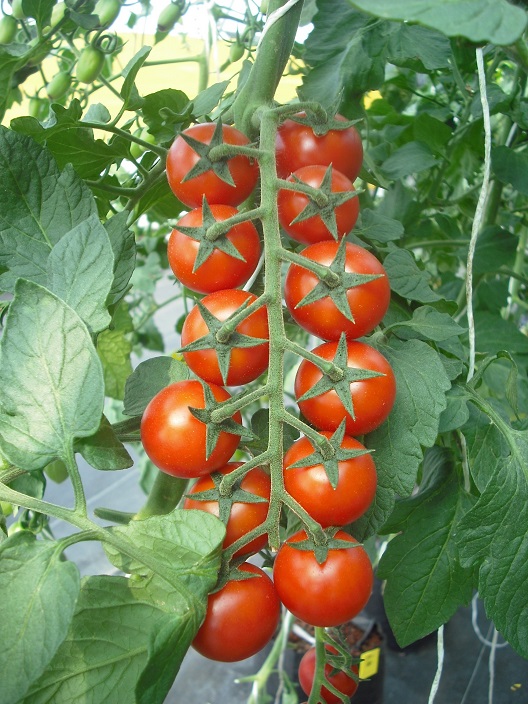Pumice, tezontle and nutritive solutions in cherry tomato crop
DOI:
https://doi.org/10.28940/terra.v39i0.781Keywords:
nutrient content, Solanum lycopersicum, substratesAbstract
The use of low cost local mineral substrates and nutrient solutions with the suitable chemical composition may be the alternative to maximize the production potential of cherry tomato (Solanum lycopersicum L.). The objective of this study was to evaluate substrates from the area of the State of Nayarit, Mexico in combination with nutritional solutions, on growth, nutritional content and cherry tomato production. The experimental design was completely randomized with two-factor arrangement. The factors were pumice and tezontle substrates and Steiner and Castellanos nutrient solutions, which originated four treatments with 11 repetitions where one of them was a plant with two stems. The variables plant height, stem diameter, leaf area, dry aerial part biomass, dry root biomass, fruit production per plant, soil plant analysis development (SPAD) units and leaf nutrient content (N, P and K) were determined. The results showed that Steiner nutritive solution increased fruit production and also growth evaluated in plant height, stem diameter and dry root biomass. The nutritional content of N, P and K was higher with Castellanos solution. In the pumice substrate, fruit production, plant growth and nutrient content were higher in relation to tezontle plants. The study concluded that pumice substrate in combination with Steiner nutritive solution was the most viable for cherry tomato, since it favored plant growth and fruit production.
Downloads
Publication Facts
Reviewer profiles N/A
Author statements
- Academic society
- Terra Latinoamericana
- Publisher
- Mexican Society of Soil Science, C.A.

















